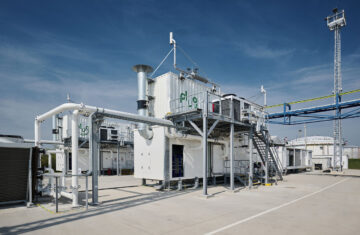Regardless of who occupies the White House, renewable energy is poised to continue pushing fossil power plants out of the picture in the coming years. The Inflation Reduction Act of 2022 plays a significant role in this shift, alongside the growing community solar movement and the intensifying rivalry between coal producers and natural gas stakeholders.
The Coal Industry’s Renewable Energy Transformation
Low-cost natural gas has been driving coal out of the US power generation market since the early 2000s. However, former coalfields present new opportunities for renewable energy development. Peabody Energy, one of the major coal producers, is preparing for a renewable energy makeover at several former coal sites in Indiana and Illinois. In collaboration with the global energy firm RWE, Peabody has set an ambitious target of 5.5 gigawatts of solar power and energy storage.
Government Initiatives in Renewable Energy
The US Department of Energy is actively promoting the development of former mines for solar energy projects. For instance, a 270-megawatt solar power plant is set to be built in Nicholas County, West Virginia. Additionally, a former coalfield in Kentucky is being transformed into a giant water battery, utilizing gravity and excess renewable energy to manage water between two reservoirs.
Community Solar Trends
The community solar trend is gaining traction, allowing ratepayers to benefit from locally produced renewable energy, even if they cannot install their own solar panels. With decreasing solar costs, many utilities are shifting to an opt-out model, where the solar rate applies to all customers unless they choose to opt out.
A significant development in community solar occurred recently when Pivot Energy announced a $450 million financing plan aimed at a 300-megawatt portfolio of 96 distributed renewable energy projects. This transaction is noted as one of the largest ever raised for distributed generation solar, highlighting the growing importance of community solar initiatives.
State-Level Clean Energy Goals
The Clean Energy States Alliance reports that 24 states and the District of Columbia have set 100% clean energy goals. Many of these states are actively refining their clean energy plans to mitigate potential federal interference. For example, Massachusetts Governor Maura Healey recently signed a comprehensive permit reform bill, facilitating the development of renewable energy infrastructure.
The Impact of the Inflation Reduction Act

The Inflation Reduction Act of 2022 remains a critical factor in the renewable energy landscape. Despite political opposition, the Act has significantly benefited states that traditionally support fossil fuels, making it challenging to dismantle. According to Carl J. Fleming, a partner at McDermott Will & Emery, the IRA has transformed domestic and international financing for renewable energy projects, allowing a wider pool of investors to access tax credits.
Conclusion
The ongoing transition to renewable energy is set to reshape the US energy landscape, fostering innovation and collaboration across sectors. With significant investments in solar and community solar projects, along with supportive state policies, the future of clean energy looks promising.
Sources
- Inflation Reduction Act of 2022
- Peabody Energy
- RWE
- US Department of Energy
- Pivot Energy
- Clean Energy States Alliance
- McDermott Will & Emery



